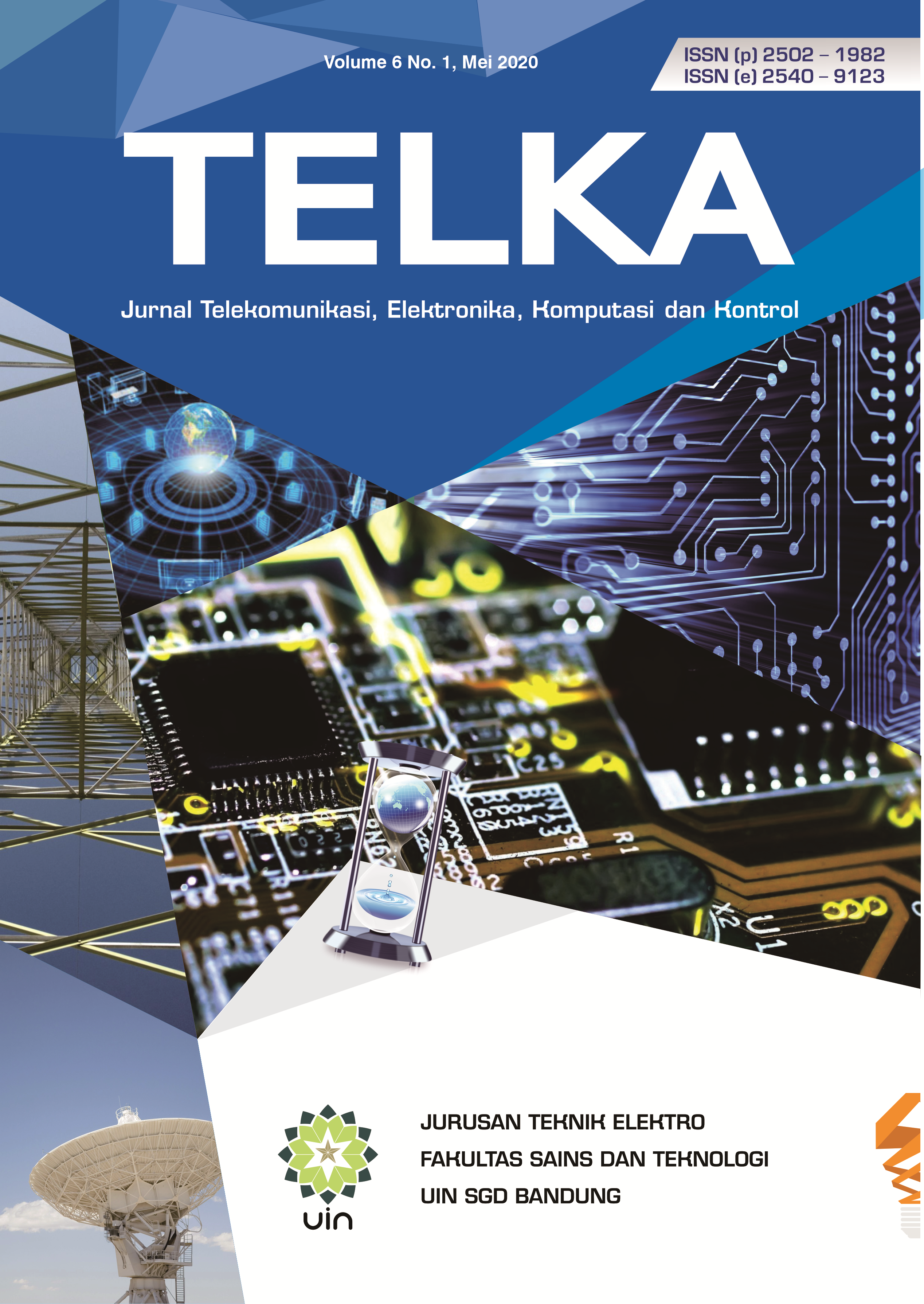Pengendali PID untuk Pengaturan Kecepatan Gerak Robot Omnidireksional Tiga Roda
DOI:
https://doi.org/10.15575/telka.v6n1.66-74Kata Kunci:
Pengendali PID, robot omnidireksional, pengaturan kecepatanAbstrak
Gerak robot omnidireksional dibangkitkan dengan cara mengatur kecepatan putaran pada tiga roda omnidireksional yang terpasang pada poros penggerak agar mampu bergerak ke segala arah tanpa perlu reorientasi. Pengaturan kecepatan ini membutuhkan metode dan strategi pengendalian yang tepat. Ketepatan ini berhubungan erat dengan kemampuan robot untuk tetap kokoh ketika berhadapan dengan gangguan. Penelitian ini bertujuan untuk membuat sebuah pengendali gerak robot omnidireksional menggunakan pengendali PID. Data hasil penelitian menunjukan bahwa manuver gerak robot ini dipengaruhi oleh pengaturan arah dan besar nilai kecepatan ketiga motor penggerak yang terpasang pada robot. Berdasarkan set point sebesar 100 rpm dengan perintah arah gerak maju, catatan kriteria tanggapan peralihannya adalah waktu naik pada detik ke 2.8, waktu puncak pada detik ke 4 dan waktu keadaan mantap detik ke 4. Kesalahan keadaan mantap cenderung mendekati nol, dengan nilai sebesar 0.71 rpm, tanpa adanya lewatan dan variasi puncak-puncak tanggapan. Tanggapan ini diperoleh dengan pengaturan parameter konstanta pengendali PID untuk motor kiri dan kanan masing-masing adalah [0.000999747; -0.00002725;-50] dan [-0.000554; -0.00585;0].Referensi
M. S. Masmoudi, N. Krichen, M. Masmoudi, and N. Derbel, “Fuzzy logic controllers design for omnidirectional mobile robot navigation,” Appl. Soft Comput. J., vol. 49, pp. 901–919, 2016.
P. Petrov and V. Georgieva, “Adaptive velocity control for a differential drive mobile robot,” 2018 20th Int. Symp. Electr. Appar. Technol. SIELA 2018 - Proc., no. 2, pp. 1–4, 2018.
J. Yin, G. Yang, F. Zhao, and H. Qiu, “Motion planning implemented in ROS for Omni-directional Wheeled Mobile Robot,” 2015 IEEE Int. Conf. Inf. Autom. ICIA 2015 - conjunction with 2015 IEEE Int. Conf. Autom. Logist., no. August, pp. 2695–2700, 2015.
Z. U. Hassan, W. U. Rahman, and U. Farooq, “Implementation of velocity control algorithm on a swerve based omni-directional robot,” Proc. - 11th Int. Conf. Front. Inf. Technol. FIT 2013, pp. 195–198, 2013.
A. Birari, A. Kharat, P. Joshi, R. Pakhare, U. Datar, and V. Khotre, “Velocity control of omni drive robot using PID controller and dual feedback,” 2016 IEEE 1st Int. Conf. Control. Meas. Instrumentation, C. 2016, no. Cmi, pp. 295–299, 2016.
F. G. Rossomando and C. M. Soria, “Identification and control of nonlinear dynamics of a mobile robot in discrete time using an adaptive technique based on neural PID,” Neural Comput. Appl., vol. 26, no. 5, pp. 1179–1191, 2015.
B. K. Patle, G. Babu L, A. Pandey, D. R. K. Parhi, and A. Jagadeesh, “A review: On path planning strategies for navigation of mobile robot,” Def. Technol., 2019.
O. R. E. Motlagh, T. S. Hong, and N. Ismail, “Development of a new minimum avoidance system for a behavior-based mobile robot,” Fuzzy Sets Syst., vol. 160, no. 13, pp. 1929–1946, 2009.
N. Hacene and B. Mendil, “Motion Analysis and Control of Three-Wheeled Omnidirectional Mobile Robot,” J. Control. Autom. Electr. Syst., 2019.
C. G. Prince, Book Review: Computational Principles of Mobile Robotics, vol. 14, no. 3. 2004.













